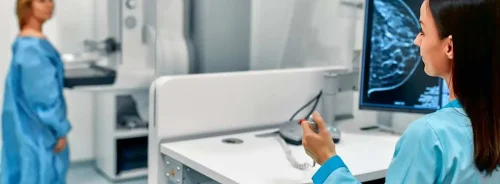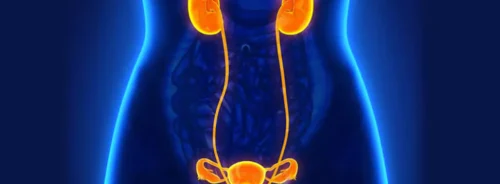Endometrial cancer is the most common gynaecological malignancy in Europe and ranks as the sixth most common female cancer in developed countries. Its incidence continues to rise, driven by ageing populations and lifestyle-related risk factors such as obesity. Despite this trend, most cases are identified early, as abnormal postmenopausal bleeding typically prompts timely investigation. As a result, mortality rates remain comparatively low, with five-year survival exceeding 75%.
Preoperative staging plays a central role in determining the optimal surgical approach, and imaging is crucial for assessing disease extent. MRI and transvaginal sonography are established tools for evaluating myometrial and cervical involvement, while CT or PET-CT is often used for distant staging. However, preoperative nodal assessment remains problematic due to high rates of false-positive and false-negative findings. Surgical staging is therefore regarded as essential, though debate continues around the balance between systematic lymphadenectomy and sentinel lymph node assessment.
The Node Reporting and Data System (Node-RADS), introduced in 2021, was developed to standardise lymph node evaluation and potentially improve accuracy and reproducibility. A recent investigation assessed its role in preoperative staging of endometrial cancer, with a particular focus on the influence of reader expertise and the comparative performance of MRI and CT.
Structured Assessment with Node-RADS
Node-RADS is based on the combined assessment of lymph node size and morphological features including shape, margins and texture. Scores are assigned on a five-point scale, ranging from low suspicion (categories 1–2) through indeterminate (category 3) to high suspicion of malignancy (categories 4–5). The system allows risk stratification and structured reporting, reducing variability in interpretation. For endometrial cancer, equivocal cases such as Node-RADS 3 are interpreted with reference to tumour characteristics. For example, in low-grade endometrioid tumours smaller than 2 cm without deep myometrial invasion, the risk of nodal involvement is considered very low.
In the evaluation, 128 women with histologically proven endometrial cancer who had undergone preoperative MRI between 2020 and 2023 were included. Of these, 100 also underwent CT. The patient population had a mean age of 67 years. Nodal metastases were confirmed in 12.5% of cases following surgery, the majority being macrometastases larger than 2 mm. Six readers assessed the imaging independently, comprising two highly experienced pelvic radiologists, two final-year residents with intermediate experience, and two early-year residents with little pelvic imaging exposure. Each reader applied Node-RADS criteria to MRI and CT examinations, with disagreements resolved by consensus within each experience group. Their findings were then compared with postsurgical pathology, providing a benchmark for diagnostic accuracy.
Must Read: Enhancing Endometrial Cancer Subtyping with MRI
Influence of Reader Experience
Reader expertise proved decisive in the reproducibility of Node-RADS. Among highly experienced radiologists, MRI achieved 63% sensitivity and 100% specificity in detecting nodal metastases, while CT achieved 50% sensitivity and 100% specificity. In contrast, less experienced readers showed reduced performance, with sensitivity falling to 44% on MRI and 43% on CT, alongside modest reductions in specificity. Concordance in assigning Node-RADS categories varied widely. On MRI, agreement ranged from substantial among experts to only slight among the least experienced readers. On CT, results followed a similar pattern.
When the classification was simplified to a binary distinction between positive and negative nodal status, reproducibility improved across all groups, though experience still remained a key factor. Consensus discussions highlighted the extent of variability: highly experienced readers required agreement in fewer than 4% of MRI cases, compared to over 10% for the least experienced group. These findings confirm that while Node-RADS provides a structured approach, its reliability is strongly dependent on training and familiarity with pelvic imaging.
Inter-reader agreement was also reflected in measures of diagnostic accuracy. Highly experienced readers achieved 95% accuracy using MRI and 93% using CT. Intermediate readers performed nearly as well, with accuracies of 93% and 91% respectively. Poorly experienced readers achieved 87% accuracy with both modalities, reflecting a significant gap in diagnostic confidence. These patterns underscore that Node-RADS functions best as a reproducible staging tool in the hands of readers with dedicated expertise.
MRI Versus CT in Clinical Performance
MRI consistently demonstrated superior diagnostic performance compared to CT across all levels of experience. In highly experienced hands, MRI achieved both high sensitivity and excellent specificity, outperforming CT particularly in identifying metastatic nodes. The agreement between MRI and CT assessments was nevertheless strong, with concordance rates of 94–98% across groups. This suggests that while both modalities provide consistent classification when interpreted by experienced readers, MRI is better suited to detecting subtle nodal involvement.
When compared with pathology, MRI-based Node-RADS offered 62.5% sensitivity, 100% specificity and an overall accuracy of 95% among senior radiologists. For CT, sensitivity was 50% but specificity remained at 100%, with overall accuracy at 93%. Among less experienced readers, sensitivity dropped markedly for both modalities, highlighting the importance of clinical expertise.
The structured approach of Node-RADS also helped increase the negative predictive value of both imaging techniques, particularly in ruling out nodal metastases. This is significant in clinical practice, as unnecessary lymphadenectomy can increase postoperative morbidity. By improving reproducibility and accuracy in experienced hands, Node-RADS may therefore help reduce overtreatment and support more tailored surgical decisions.
Node-RADS represents a valuable tool for structured nodal staging in endometrial cancer, offering reproducibility and accuracy when applied by experienced readers. MRI provides higher sensitivity than CT across all levels of expertise, making it the preferred modality for preoperative evaluation. While the system enhances clarity and consistency in reporting, its performance is strongly dependent on reader expertise, with less experienced radiologists showing markedly lower accuracy. These findings underscore the importance of investing in specialist training to maximise the benefits of structured reporting systems. By supporting more precise preoperative staging, Node-RADS has the potential to refine surgical planning, limit unnecessary procedures and contribute to more individualised care in endometrial cancer management.
Source: European Radiology
Image Credit: iStock






